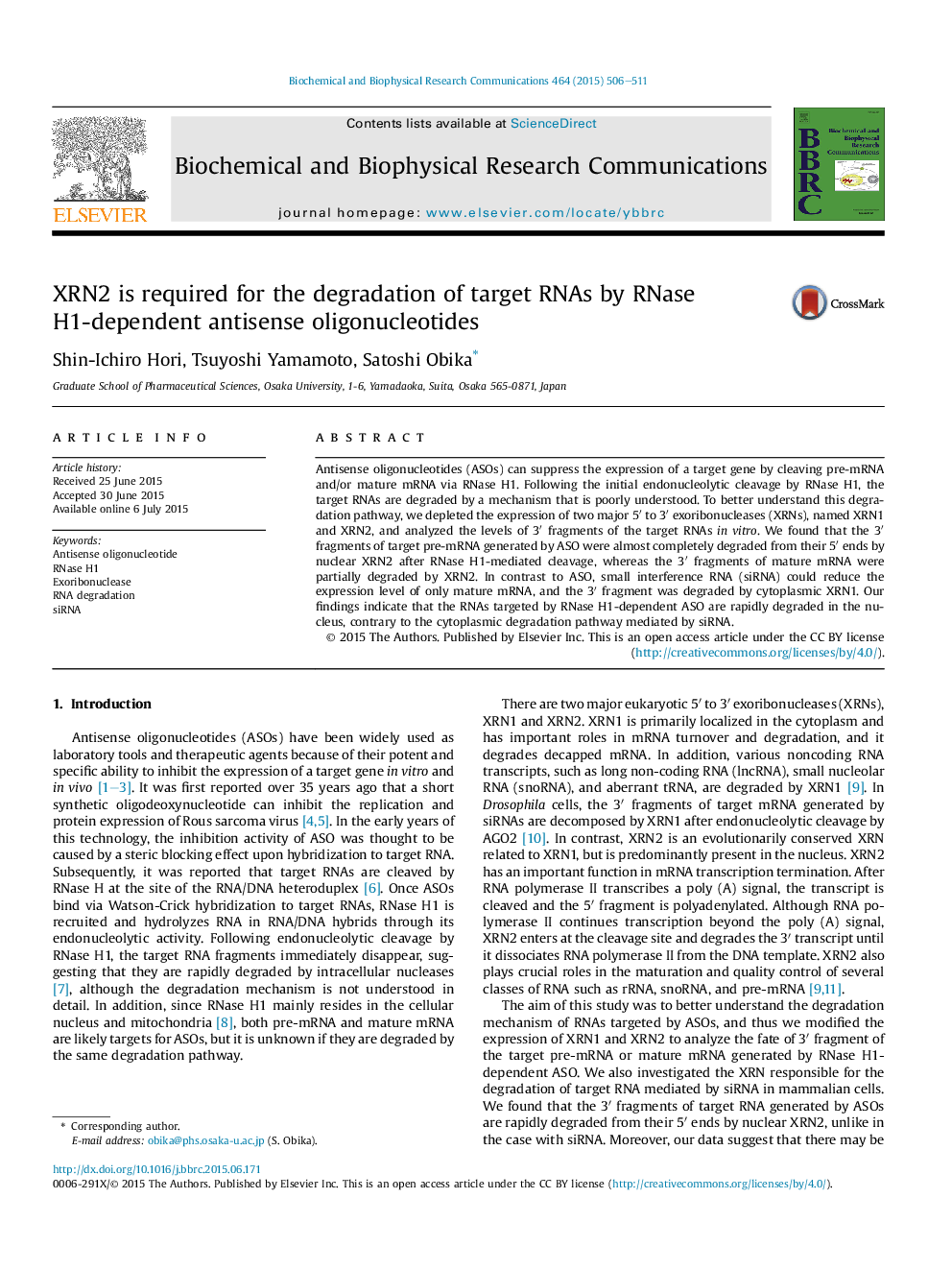| Article ID | Journal | Published Year | Pages | File Type |
|---|---|---|---|---|
| 10751274 | Biochemical and Biophysical Research Communications | 2015 | 6 Pages |
Abstract
Antisense oligonucleotides (ASOs) can suppress the expression of a target gene by cleaving pre-mRNA and/or mature mRNA via RNase H1. Following the initial endonucleolytic cleavage by RNase H1, the target RNAs are degraded by a mechanism that is poorly understood. To better understand this degradation pathway, we depleted the expression of two major 5Ⲡto 3Ⲡexoribonucleases (XRNs), named XRN1 and XRN2, and analyzed the levels of 3Ⲡfragments of the target RNAs in vitro. We found that the 3Ⲡfragments of target pre-mRNA generated by ASO were almost completely degraded from their 5Ⲡends by nuclear XRN2 after RNase H1-mediated cleavage, whereas the 3Ⲡfragments of mature mRNA were partially degraded by XRN2. In contrast to ASO, small interference RNA (siRNA) could reduce the expression level of only mature mRNA, and the 3Ⲡfragment was degraded by cytoplasmic XRN1. Our findings indicate that the RNAs targeted by RNase H1-dependent ASO are rapidly degraded in the nucleus, contrary to the cytoplasmic degradation pathway mediated by siRNA.
Related Topics
Life Sciences
Biochemistry, Genetics and Molecular Biology
Biochemistry
Authors
Shin-Ichiro Hori, Tsuyoshi Yamamoto, Satoshi Obika,
